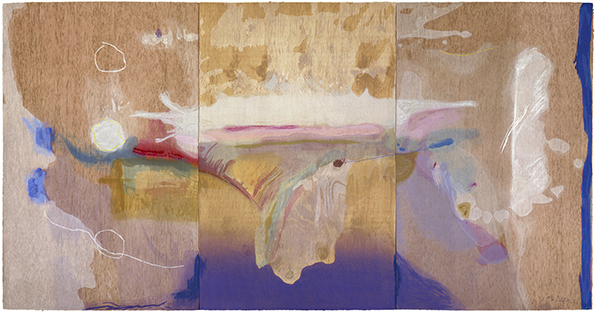
JULY 1–SEPTEMBER 24, 2017
2000s: MADAME BUTTERFLY, JAPANESE MAPLE, SNOW PINES, WEEPING CRABAPPLE
Helen Frankenthaler
American, 1928–2011
Madame Butterfly
2000
102-color woodcut from forty-six woodblocks on three sheets of handmade paper
Helen Frankenthaler Foundation
© 2017 Helen Frankenthaler Foundation, Inc. / Artists Rights Society (ARS), New York / Tyler Graphics Ltd., Mount Kisco, New York
Frankenthaler continued to make prints into the 2000s. The end of her print career has yet to be fully catalogued, but she made at least six woodcuts in that decade. As in the 1990s, some of her greatest work in printmaking came as a result of collaborations with Shibata and Tyler. In 1982-88, she made a screen, Gateway, that combined printmaking, painting, and sculpture. While in Kyoto in 1983, she purchased an Edo-period screen; after completing the Japanese-influenced Genji prints in 1998, she returned to a screen-like format to produce the triptych Madame Butterfly (2000). While its two-year production process was arduous, with many proofs destroyed and both artist and printer on the verge of abandoning the project, the resulting print remains one of her finest.
The titles of the last of Frankenthaler’s prints, such as Japanese Maple (2005), refer to trees on her property in Darien, Connecticut, although, as with many of her prints, the works do not necessarily demonstrate explicit connections to their titles. Travel played a significant role in Frankenthaler’s printmaking process, as evidenced by her collaborations with workshops in the United States, Europe, and Asia; at the end of her life, as ever, she also drew inspiration from the beauty of her immediate surroundings, as seen in Snow Pines (2004) and Weeping Crabapple (2009).

